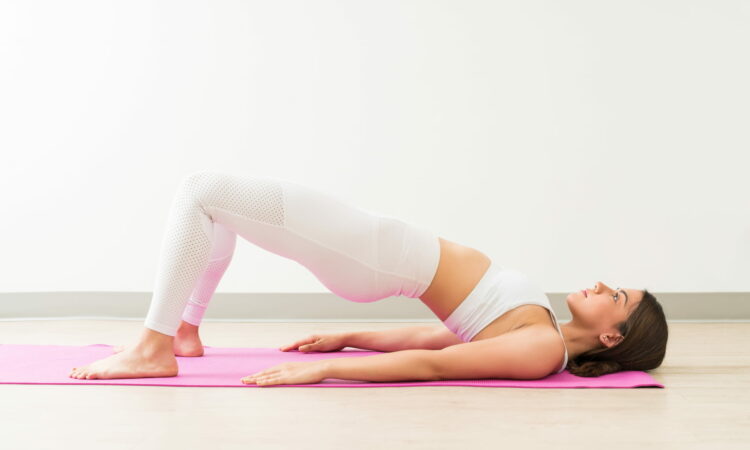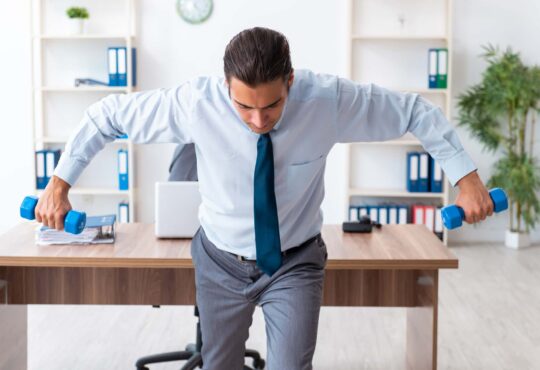
Your pelvic floor is our most private area – parts of the body most of us don’t think about until something goes wrong . . . or very right.
That’s because it’s closely connected with the most intimate functions of your body: sex, childbirth, urination, and defecation.
It’s also correlated with lower back pain or an erect posture.
Therefore, ignoring any pain or discomfort that may be caused by a weak or tight pelvic floor is a less-than-optimal health plan.
What is Your Pelvic Floor?
Just as it sounds, it’s located at the very bottom of your pelvis. That means it must hold your internal organs from falling through.
It’s a group of muscles called the levator ani that’s attached to your coccyx, or tailbone.
1. Puborectalis – connects your pubis bone to your rectum. Controls your anal sphincter.
2. Pubococcygeal – goes from pubic bone to coccyx. Largest of the three.
3. Iliococcygeal – connects ischial crest to coccyx.
For many years, doctors have prescribed Kegel exercises to both men and women to re-strengthen muscles weakened by childbirth or age. This helps both genders regain urinary and bowel control.
For men, they can also help with premature ejaculation and erectile dysfunction. Many men perform them simply to have stronger erections and more satisfying orgasms.
But Kegels involve only a limited number of muscles. Performing exercises to improve your entire pelvic floor function makes more sense than Kegels which strengthen only isolated muscles.
What Causes Pelvic Floor Muscle Issues
The largest cause is, of course, childbirth.
When you give birth, that can badly stretch and even tear your pelvic floor muscles.
The reason for poor pelvic floor muscles that affect us all sooner or later is simply aging and atrophy.
The third major reason we don’t have pelvic floor muscles as fit as possible is simple inactivity: sitting around too much, with not enough regular exercise and movement.
Most younger men don’t have weak pelvic floors. However, it’s quite likely they suffer from overactive pelvic floors. That means their muscles are too tight or stiff. Strengthening these muscles without relieving the tightness just makes the condition worse.
But older men, especially if they’re inactive or have had prostate surgery, do need to strengthen their pelvic floor muscles.
According to some experts, many women have some form of pelvic floor dysfunction. This can be muscles stretched or torn by childbirth, weakened by inactivity or, simply, like many men, too tight.
Hypertonic Pelvic Floors
Also, many people who work out, particularly those who focus on strengthening their core muscles, have overactive pelvic floor muscles. That’s because they’re being tensed, but are not completely relaxed afterward. This is a hypertonic pelvic floor.
It can also happen in people who often keep their bladder muscles tensed, such as to avoid using public restrooms.
If a hypertonic pelvic floor is causing you major symptoms, which can be many things related to urine control, bowel control, sex or lower back and hip pain – see a doctor for advice on which exercises to perform.
Benefits to Strengthening Your Pelvic Floor
* Helps maintain or regain urinary continence
* Improves ejaculatory control (men)
* Helps regain strength post-pregnancy (women)
* Helps recover from prostate surgery (men)
* Helps maintain or regain fecal continence
* Reduces your risk of prolapse
* Increases sexual sensation and orgasmic potential
* Improves your posture
First, Become Aware of Your Pelvic Floor Muscles
This will prepare you for the exercises.
Remember: your diaphragm (of your lungs) and your pelvic floor work together. They’re roughly parallel.
When you inhale, you’re pulling everything up.
When you exhale, your diaphragm relaxes, and so does your pelvic floor. That’s the time it’s easier to feel and squeeze your pelvic floor muscles.
Inhale and exhale gently through your nose, not your mouth.
Pelvic Floor Stretching
1. Lie down on a mat, on your back, on the floor. Have your feet flat on floor, so your knees are up.
2. Lift feet up.
3. Grab outside of left foot with your left hand and outside of your right foot with your right hand.
4. Rest for a few seconds in that position, feeling the gentle stretch.
5. Gently pull feet down toward the floor.
6. Hold for 30 seconds.
Better Than Kegels
A research project done to study pelvic floor exercises said the best results came from a movement that combined pelvic floor contractions with movements of the abdomen muscles and the adductor muscles of your inner thighs.
Turns out, healthy pelvic floor muscles require a balance between strength and flexibility.
Steps
1. Lie down on your back on a comfortable surface. Keep your feet flat on floor, so knees are raised. Relax.
2. Place something between your knees, so you can squeeze it with your knees: yoga block, solid pillow, rubber ball or similar object.
3. Gently squeeze the ball/block/pillow with your knees.
4. Squeeze pelvic floor muscles as though you’re stopping your flow of urine and the passing of gas. Squeeze, lift and release.
5. Feel as though you’re scooping out your lower abdominal area. Hold for five seconds.
6. Once you can do each component individually, do them all together.
7. Hold for five seconds. Release, then relax.
8. Repeat on your hands and knees.
9. Repeat with your back against the wall.
You can find a lot more pelvic floor exercises online.
Select a variety you enjoy, and make them part of your daily routine.
Before long, you’ll have stronger urinary control, less groin pain and a more upright posture.
https://www.womenshealthmag.com/fitness/g29799963/pelvic-floor-exercises/
https://www.pelvicfloorfirst.org.au/pages/working-your-pelvic-floor.html
https://www.youtube.com/watch?v=JFAe-kfuoh0&pp=ygUSd2h5IGFyZSBrZWdlbHMgYmFk
https://www.youtube.com/watch?v=luL0jAYwIpU
https://www.youtube.com/watch?v=08ocxE0FDLI
Ojukwu CP, Ojukwu CS, Okemuo AJ, Igwe SE Dr, Ede SS, Ezeigwe AU, Mbah CG. Comparative effects of selected abdominal and lower limb exercises in the recruitment of the pelvic floor muscles: Determining adjuncts to Kegel’s exercises. J Bodyw Mov Ther. 2022 Jan;29:180-186. doi: 10.1016/j.jbmt.2021.09.009. Epub 2021 Sep 25.
https://pubmed.ncbi.nlm.nih.gov/35248269/
https://www.youtube.com/watch?v=TFehvry2TVA&t=1s







